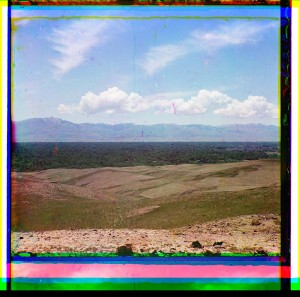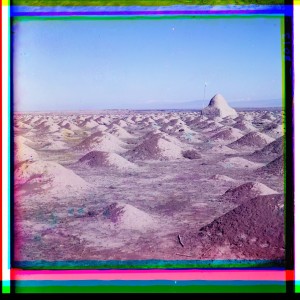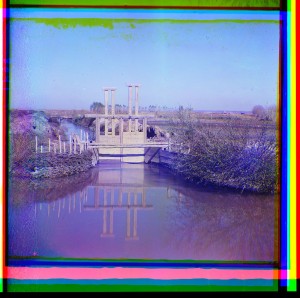 This post has kindly been written for us by Jennifer Keating, RHS Marshall Fellow, Institute of Historical Research
This post has kindly been written for us by Jennifer Keating, RHS Marshall Fellow, Institute of Historical Research
How is emptiness made, and what purposes does it serve? What cultural, material and natural work goes into maintaining nothingness? And why have a variety of historical actors, from colonial powers to cartographers, sought to construct, control and maintain physically and discursively ‘empty’ space? In April, three other IHR fellows (Courtney J. Campbell, Allegra Giovine and Will Pooley) and I organised a conference on the theme of ‘Empty Spaces’ that brought together speakers from a variety of historical backgrounds to tackle these very questions. The day saw an intriguing selection of inter-weaving topics, from ruins to representations of the sea and sky, and from vacant urban space to voids in history-writing. A hugely enjoyable keynote speech given by Matt Houlbrook reflected on the ways in which we all as historians have to engage with ‘emptiness’ in some form, whether as a specific aspect of our own topic of enquiry, or in the more historiographical sense of writing to fill gaps, voids or empty spaces – or conversely, embracing this emptiness – in our collective knowledge.
This theme of empty space provided me with a new angle from which to view my own work on Russian settler society in late tsarist Central Asia, the write-up of which is currently being funded by the IHR and the Royal Historical Society. In essence, the thesis investigates the ways in which the Russian settler community, presented with a territory far from the imperial centre that was commonly acknowledged as being ‘vast and alien’, sought to transform, appropriate or reject its ‘strange and Other-worldly’ terrain. Furthermore, I consider how ideas about Central Asia as a colonial space drove, and were driven by, these physical interventions in the landscape, as part of a broader perspective that considers the intersections between the actual reshaping of land and the social production of space in texts and images.
 For the most part, I consider places and sites that we might think of as the opposite of empty space: work on irrigation projects, afforestation, railway building and settlement creation. Yet almost all of these activities and their representations were underpinned by pervasive Russian notions about the emptiness of rural Central Asia. Besides its settled river valleys and oases, over 75% of Turkestan’s territory comprised arid and semi-arid steppe and desert, and the perceived emptiness of these areas served a compelling ideological purpose in Russian discourse. Descriptions of the steppe commonly referenced landscape conventions of the sublime, awesome and terrifying in equal measure. These lands were held to be ‘lifeless’ and ‘deathly’, and visitors described in great detail the bewildering scale of an ‘empty’ environment that resembled ‘a circle of which the centre was everywhere, and the circumference nowhere’.
For the most part, I consider places and sites that we might think of as the opposite of empty space: work on irrigation projects, afforestation, railway building and settlement creation. Yet almost all of these activities and their representations were underpinned by pervasive Russian notions about the emptiness of rural Central Asia. Besides its settled river valleys and oases, over 75% of Turkestan’s territory comprised arid and semi-arid steppe and desert, and the perceived emptiness of these areas served a compelling ideological purpose in Russian discourse. Descriptions of the steppe commonly referenced landscape conventions of the sublime, awesome and terrifying in equal measure. These lands were held to be ‘lifeless’ and ‘deathly’, and visitors described in great detail the bewildering scale of an ‘empty’ environment that resembled ‘a circle of which the centre was everywhere, and the circumference nowhere’.
Claims that rural terrain was nothing but ‘one vast waste’, or a ‘monotonous Sahara’ were initially sustained by a lack of local geographical knowledge. With few accurate maps, Russian explorers and geographers set about ‘discovering’ the landscape, rendering it textually, cartographically and in photographs, acts which were very much part of the scientific and cultural exercise of colonial power. The documentation of this terrain generated discursively ‘empty’ space that had significant use and potential. Firstly, words and images were powerful tools that could be used to frame an empty landscape as an environment open for improvement. Engineers, irrigation specialists and state officials embarked on numerous projects to ‘fertilise this huge and hitherto unproductive space,’ casting the land as a potentially useful resource that had deteriorated into a state of dis-use. Secondly, emptiness acted as a convenient foil for exploitation. The aesthetic image of unproductive rural space provided the foundation for Russian claims to have transformed the land, resurrecting what was discursively labelled as ‘dead’, ‘empty’ and ‘barren’ into ‘fertile’ and ‘productive’ fields of irrigated land on which could be grown cereal crops, orchards and cotton, or beneath which coal, graphite, gold and other precious resources could be mined.
 In the east of Russian Central Asia, where land was readily admitted to already be far more fertile than in the more arid regions of the Caspian, emptiness had rather different connotations. Here, rural land was occupied largely by Kazakh and Kirgiz nomads, yet local Russian officials confidently proclaimed that as the nomads had no fixed abode, the land was ‘obviously empty’. Such statements had the effect of discursively dispossessing indigenous peoples of their land, emptying the landscape of any inhabitants with sovereign claim to it. In turn, the Russian Resettlement Administration, a department of the imperial government that encouraged and oversaw the state-sanctioned resettlement of millions of land-hungry peasants from Central Russia to the empire’s Asiatic lands, made available large parts of rural land to incoming settlers.
In the east of Russian Central Asia, where land was readily admitted to already be far more fertile than in the more arid regions of the Caspian, emptiness had rather different connotations. Here, rural land was occupied largely by Kazakh and Kirgiz nomads, yet local Russian officials confidently proclaimed that as the nomads had no fixed abode, the land was ‘obviously empty’. Such statements had the effect of discursively dispossessing indigenous peoples of their land, emptying the landscape of any inhabitants with sovereign claim to it. In turn, the Russian Resettlement Administration, a department of the imperial government that encouraged and oversaw the state-sanctioned resettlement of millions of land-hungry peasants from Central Russia to the empire’s Asiatic lands, made available large parts of rural land to incoming settlers.
Rural emptiness was clearly very much in the eye of the beholder. It could be both a hostile, threatening feature, in need of correction, and something to be embraced, under the right conditions. It legitimised colonisation, in terms of the ‘transformative’ effects on the land of Russia’s self-styled ‘civilising’ mission in Central Asia, and as a means of validating the settlement of tens of thousands of incoming Russian and Ukrainian peasants. At the same time however, the construction of empty space was far more than a tool to be wielded by the imperial state. Everyday Russian settlers also actively engaged with and referenced ideas of emptiness, very often for their own private gain. The portrayal of empty surface land, beneath which lay myriad natural resources was used in petitions to the state to grant mining and industrial concessions, while similar notions were employed to try to win railway-building contracts and to receive permission to build new homes and businesses. Thus the construction of emptiness was part of an ‘imperial language game’ in which many – consciously or unconsciously – participated.
The framing of empty rural land had numerous implications. The tsarist desire to exploit the land by means of irrigation and crop planting would reach its apogee in the Soviet period, actions that have had, and continue to have, severe environmental ramifications for the whole of the Central Asian region. Meanwhile, the sustained distribution of nomadic land to incoming settlers lead both to the incremental destruction of the nomadic way of life, and also to an escalation of inter-ethnic tensions that would contribute in no small part to the widespread violence of the 1916 uprisings. Notions of emptiness, as produced by Russian settler society, reveal not only colonial attitudes to geography, space and environment, and the desire to re-make landscape, but also some of the conflicting outcomes of such ideas.
